Chinese robots "the rivers and lakes", did not earn a few sons in the end of the year, really no core technology?
“The cost of labor is getting higher and higher. We often joked that we seem to be working for workers for one year.†Liu Feng (pseudonym), a manufacturer of bearings in the Pearl River Delta, has been feeling more and more about rising labor costs in recent days. Bring pressure to yourself.
At present, the average wage of employed people in urban units in China has soared from 18,200 yuan 10 years ago to 56,399 yuan. With the rising labor costs, many companies have introduced modern and automated equipment to upgrade their technology. The industrial robot market and industry have gradually flourished, and the “ Machine substitution†campaign has spread across the country.
Following the market, the robot industry is standing at the forefront, the policy is prosperous and released, and capital is moving. In 2014, the Ministry of Industry and Information Technology issued the “Guiding Opinions on Promoting the Development of Industrial Robot Industryâ€, clearly proposing to cultivate 3 to 5 internationally competitive leading enterprises and 8 to 10 supporting industrial clusters.

In 2016, the Chinese robot market has grown by leaps and bounds. In the first half of 2016, China achieved a total sales volume of 19,700 domestic robots, which was 37.7% higher than the previous year, and the actual sales volume increased by 70.8% over the previous year. CICC forecasts that domestic industrial robots are expected to exceed 35,000 units in 2017, a year-on-year increase of 60%.
Robot rivers and lakes mapAt present, the Chinese robot “Jianghu†has differentiated from the four “sects†of the East, the West and the North. The CCID Research Institute of the Ministry of Industry and Information Technology recently released the 2016 edition of the White Paper on the Development of China's Robot Industry, saying that the Chinese robot industry has formed four regional clusters around the Bohai Sea, the Pearl River Delta, the Yangtze River Delta and the Midwest.
Qu Daokui, president of Xinsong Robot, told the First Financial Reporter that the use rate of a regional robot often represents the manufacturing and economic development level of the region. The application of robots in the Yangtze River Delta and Pearl River Delta, which are the backbone of China's manufacturing industry, is clearly ahead of other parts of the country.
As the midpoint of the coastal zone and the lower reaches of the Yangtze River, the Yangtze River Delta relies on a complete range of industries and strong educational and scientific research strength. It starts from the township enterprise model in Sunan and the grassroots entrepreneurship model in Zhejiang, and also relies on excellent trade, shipping facilities construction and financial industry development. From the traditional manufacturing industry to the high-tech industry with "heavy, intelligent, upstream" characteristics gradually transform.
Zhang Zhen, the co-president of Shandong Wanteng Technology, told the First Financial Reporter, “In the application of robots and high-end equipment, the Yangtze River Delta enterprises have the advantage of intelligent application, and the concept of “machine substitution†is more acceptable. This is related to the support of relevant governments in the Yangtze River Delta."
As the gateway to South China, the Pearl River Delta docks the windows of Hong Kong, Macao and Southeast Asia. As the first city group with the first special layout and the best atmosphere, the Pearl River Delta has completed the first barrel of gold accumulation with the “three to one supplement†processing industry, relying on excellent trade and shipping facilities. The development of the construction and financial industry, the industrial structure from the export processing industry to a high-tech industry with "light, smart, terminal" characteristics gradually transform.
As of September 2016, 1,485 projects in the traditional manufacturing industry in Dongguan have been declared “machine substitutionâ€. The senior officials of the KUKA China told the First Financial Reporter that although it is still in the integration period, KUKA will cooperate with Midea's strategy of upgrading its manufacturing industry in China in the future. The KUKA, one of the "four big families" of the robot, is helping the United States, and Gree is beginning to force the robot industry. In the future, the West Bank plot will become a rising area for the development of the Chinese robot industry.
Among them, the Pearl River Delta has such outstanding start-ups as Dajiang and Feifei, as well as traditional home appliance manufacturers such as Midea and Gree. The Yangtze River Delta is more forward-looking and more advantageous in the robotics and high-end equipment industries. For example, the four major robot families familiar with the industry, such as ABB, FANUC, Yaskawa, China headquarters or headquarters-level R&D centers. Located in Shanghai. In addition, Shanghai has also developed the second and third largest robot development manufacturers in China's industrial robots, including Wodi and Xinshida.
"Infiltration is difficult"The large database of the China Industrial Research Institute shows that in March 2017, the national industrial robot output was 10,163 sets, an increase of 78.2%; from January to March, the cumulative output of industrial robots nationwide was 25,220 sets, an increase of 55.1%.
However, although the market is in great demand for industrial robots, it has been diluted to a much larger Chinese manufacturing denominator, but it appears to be minimal. Low penetration seems to be the primary problem in the development of the robot market. According to Shen Wanhongyuan, the density of industrial robots in China (the number of industrial robots per 10,000 workers) is only 49, lower than the global average of 69, while the density of industrial robots in Korea is 531, which is more than 10 times that of China.
"Although the wages of workers are high, but they can work normally, replacing people with machines means that the money for several years must be upgraded in the production line. What if the company does not recover the cost?" Liu Feng worriedly The first financial reporter said.
Coincidentally, a manufacturing company in the Yangtze River Delta, Nanjing Desheng Industrial Co., Ltd., has the same concerns. The relevant person in charge of the company told the First Financial Reporter that the production line that is completely produced by robots has not been laid due to cost reasons. Only in the field of warehousing logistics and palletizing in the company's latest Quanfeng New Energy 4.0 plant, Nanjing De Only a lot of robots appeared.
“Many people take it for granted that the use of robots for industrial production seems to take only one step to complete – the cost of purchasing the required industrial robots is not huge,†said the former senior manager of Muse Robot, the first financial reporter. This is obviously not enough. Usually, the robotic arm that everyone sees on TV is only a part of the robot that is understood in the industrial field. Such an ontology "has no torso, no fingers, no eyes, let alone have to think." 'The brain' is gone."
The robotic arm that was bought was only the “first step in the long marchâ€. After that, the company will find that the input cost is constantly increasing. Otherwise, the seemingly cool robotic arm is just a vase with a facade. It is reported that after completing this "first step", it is first necessary to complete the assembly on a dedicated pedestal. This pedestal is not an accessory product and needs to be smashed for thousands of dollars. After the assembly is completed, it takes thousands of dollars to buy one. Cage specially equipped with mechanical arms, such as emergency stop buttons and safety sensors; when the installation and placement of the robotic arm is solved, these robotic arms cannot be used immediately for industrial purposes unless they are new and expensive equipment. Production, because the company also needs to equip these robots with end effectors, tool changers, force sensing accessories, robotic arm equipped with vision system, accessory supply equipment and total control system, otherwise these robotic arms are difficult to complete such as tool parts replacement , gravity sensing, and the task of transporting parts.
From this process, it is not difficult to find that these equipments are either expensive or too long to be debugged, and the cost of using mechanical arms for industrial production will increase significantly. And the increase in costs will obviously discourage some traditional manufacturing companies.
However, cost is certainly one of the important reasons for constraining manufacturing companies to upgrade their robot production lines. However, whether the money spent can receive the expected benefits is a deeper consideration for enterprises. And this is obviously not up to standard.
When manufactured by traditional workers, they only need to inform them of the process flow to produce new products, or after new skills training, they can immediately put into production. And compared to most of the current robots, they can only be called "clumsy" products - each step of these robots needs to be programmed in advance, otherwise they don't know how to move and Operation, and each process needs to be constantly reprogrammed, Tu Yu told the First Financial reporter.
Obviously, compared with the ordinary labor force, the lack of flexibility of industrial robots has become one of the reasons for restricting the penetration rate of industrial robots. Tan Yizhi, chairman of Wuxi Micro-Research Precision, told the First Financial Reporter that there must be a rational judgment between the cost and benefit of machine substitution, otherwise the cost increase brought about by the simple machine substitution is the majority of private manufacturing. Type enterprises are unbearable.
"cost-effective" battleAccording to the China Merchants Research Institute, global industrial robot sales increased by 12% year-on-year in 2015, and more than 1.5 million industrial robots are in use worldwide. By 2018, this number will exceed 2.3 million units, of which 1.4 million are in Asia, accounting for more than half. Since 2013, China has become the world's largest consumer of robots.
However, although China's industrial robots are developing at a rapid rate, in Qu Daokui's view, the huge market has not spawned China's own robot companies that can be used in the four major families of industrial robots. It is reported that FANUC, Yaskawa, ABB and KUKA are the “four big families†of robots, and their global market share exceeds 60%.
In recent years, these international robot giants have rushed to the Chinese robot market and invested in production bases, and the competition has become increasingly fierce. Among them, ABB has placed one of the global robot business headquarters and one of the two production bases in Shanghai.
Chinese robot manufacturers are slowly developing in this context. In the market where the four oligarchs exist, Chinese robotics companies can grow along the existing development track, relying on China's huge market space and its own "price-performance ratio" advantage.
According to data estimates, the price of imported Epson SCARA (planar articulated robot) is between RMB 300,000 and RMB 400,000. It takes about three to four years for the company to recover the cost, while the domestically produced SCARA price is only RMB 200,000. The longer the arm length and the heavier the rated load, the higher the premium of the imported robot. In this respect, the cost-effective advantage of the domestic robot is greater.
Previously, the reason why user companies were reluctant to purchase domestic robots, and even some companies would rather purchase foreign second-hand robots because of fear of poor stability and affecting business. Once the problem occurred, the work was stopped and the losses were heavy. But as technology advances, these problems will eventually be overcome. According to this logic, domestic robots can realize the rise of post-production along the previous development ideas.
However, such a day seems to be ending in Qu Daokui. He told the First Financial Reporter that in the current era of the robot industry entering the 2.0 era, in addition to the four families with stable status, newcomers such as Google and Facebook are subverting the existing robot development model.
The robot industry has been developing rapidly and has been applied in various fields to promote its development. Companies such as Facebook, Microsoft, Google and Amazon have interacted with consumers through products and services, and accumulated years of primary data. In the future, artificial intelligence and deep learning are the result of a large amount of data collection, sorting and classification, labeling these primary data into information, and finally searching and reacting quickly through a powerful processor.
Under the background that the existing development model has been subverted, it is obviously not enough to use the traditional industrial thinking such as “price-performance ratio†to fill the shortcomings in the development of China's robot industry to build a “breakwater†that resists the power of foreign-funded robots.
"It's better to think about how to support several domestic robot industry leaders," Quto Kui told the First Financial Reporter.
In this regard, Midea Group has given its own solution – acquisition. Midea's acquisition of KUKA is undoubtedly consistent with its own production line requirements, the strategic positioning of enterprise intelligent manufacturing, or the goal of China Manufacturing 2025. After the acquisition, KUKA can help Midea optimize the warehousing and logistics system, improve the highly automated plant construction, stabilize the status of the US as a leader in the home appliance manufacturing industry, and directly benefit from KUKA's market development in the Chinese automotive industry. At the same time, in the home appliance manufacturing industry, the automotive industry and other fields, the beauty of the multi-point layout is clearly breaking through the simple thinking of relying on "cost-effective" to obtain the market.
And bigger and stronger national robot brand, in addition to acquisition, to build their own ecosystem is Qu Daokui in the face of industrial robots into the 2.0 era of the background proposed, "Xin Song is building a technology platform, talent platform and capital platform ". The Chinese robot industry started late, the core technology is weak, and the vast market opposite to it, if it is not reformed and subverted, it can only be handed over. The rise of Chinese robots is not as simple as price wars.
Gun Drills
GUN DRILLS with its ability to machine very straight deep holes and hold excellent ï¬nishes, was originally developed for gun barrel manufacturing. Today, this drill is designed for deep hole drilling in virtually any material.
The gundrill requires high-pressure coolant through the tool, keeping the cutting edges lubricated and providing adequate chip evacuation down the flute channel. OPT gun drills product line diameter range is .039" [1.00mm] through 1.500" [38.10mm] as a solid carbide head.
Larger diameter tools are available using a brazed inserted blade design. All gundrills can be made to any speciï¬c length. Lengths over 72" [1828 mm] will have an additional weld joint in the body of the tool.
The gundrill is designed to drill holes from solid material, and can produce bottom hole conï¬gurations, and minimize burr at intersections. The gundrill can achieve precision holes in one pass thus eliminating the need for secondary passes, and is a tool for consistent hole-to-hole reproduction.
Flexible in order quantity:
Samples can be provided before mass production, and MOQ can be discussed accordingly.
PRODUCT DETAIL:
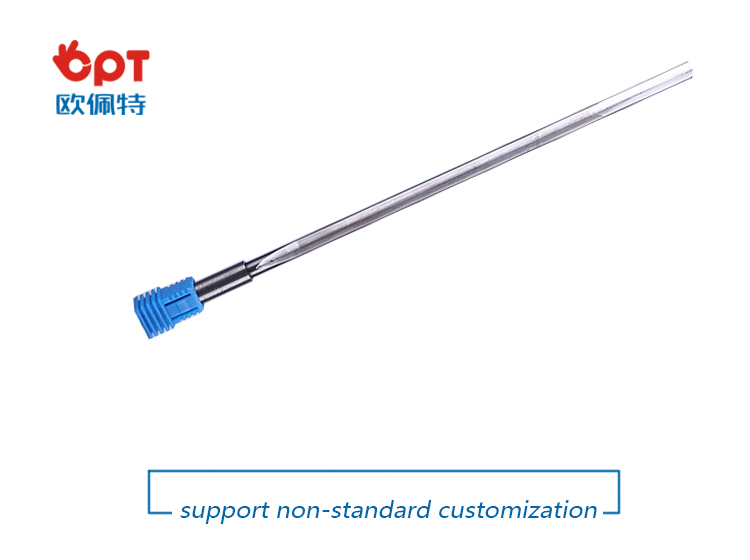
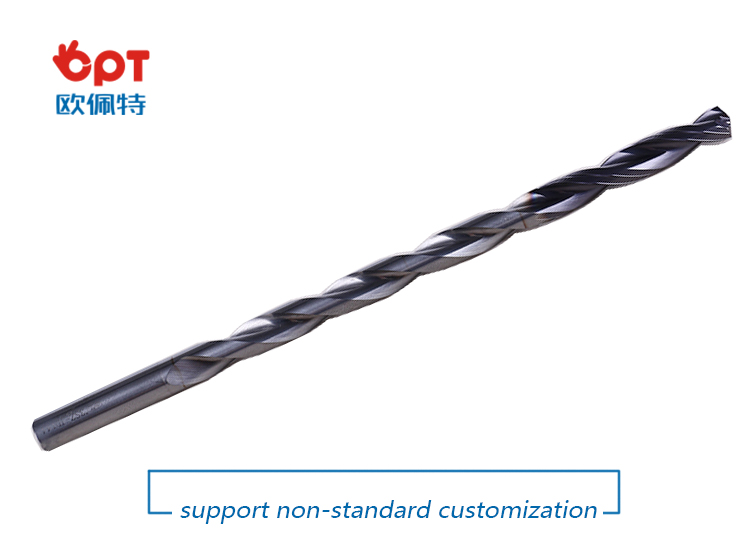
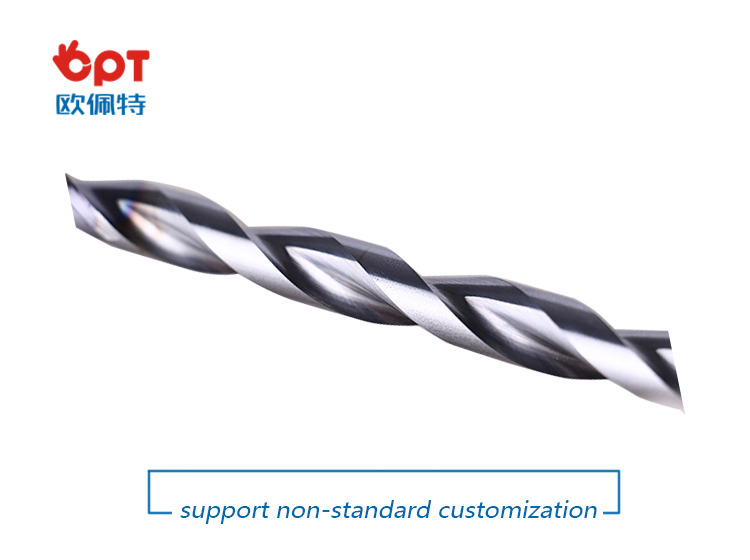
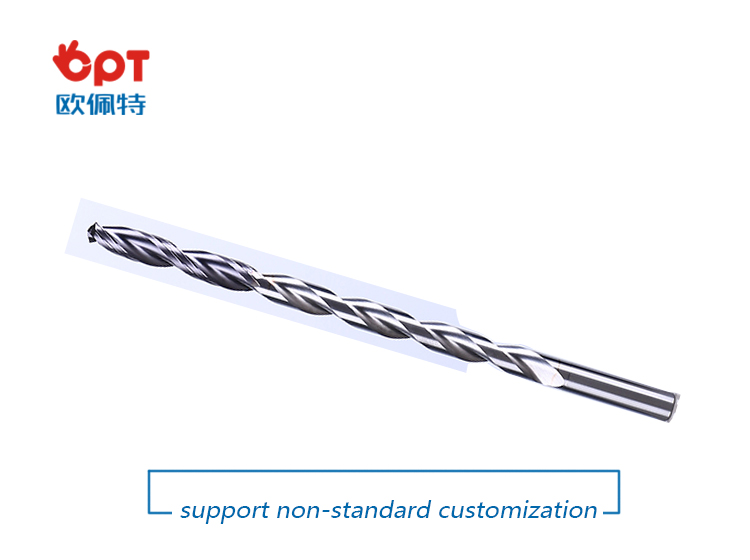
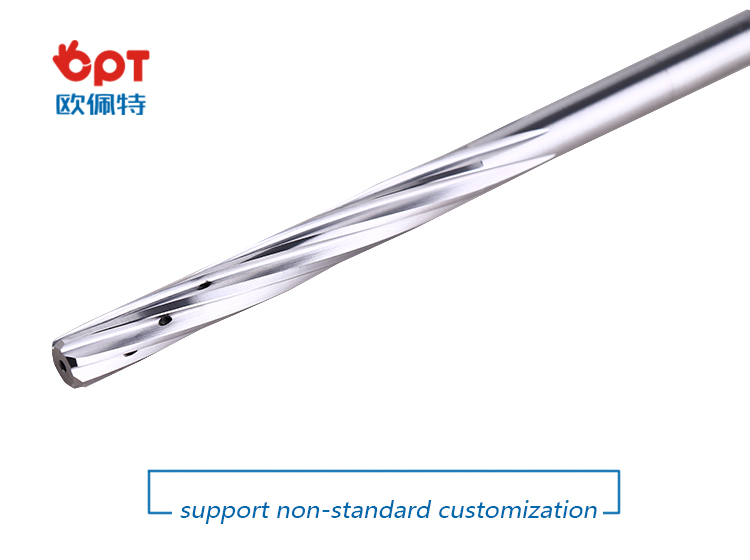
PRODUCTING PROGRESS:

PAYMENT AND DELIVERY:

PRODUCT EQUIPMENT :
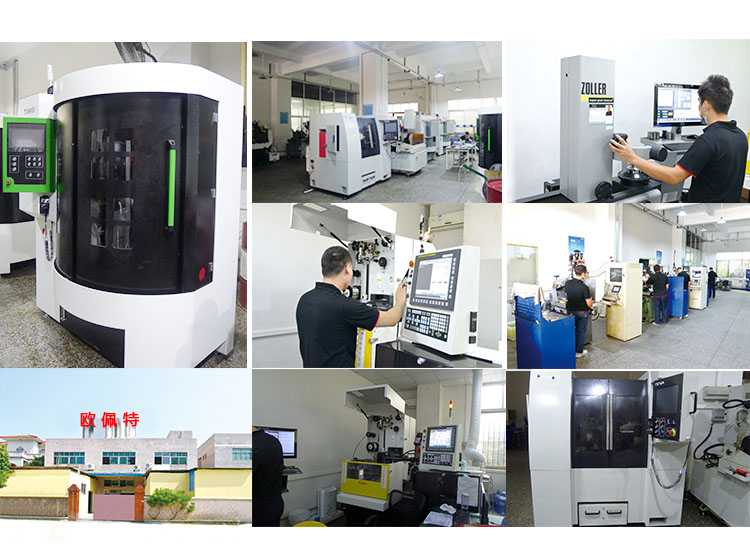
ABOUT US :
We are specialize in manufacturing PCD diamond tools and Carbide tools. Our major product inclulde PCD Inserts , PCD Reamers, PCD End Mills, PCD Taps, Cabide Inserts,Carbide Drills, Carbide Reams, Taps etc.,
We also offered customized cutting tools per drawings, and provide package according to customer requirements. We manufacture a series range of cutting tools for machining of Cast iron, Aluminium alloy and Non-Ferros metal, it is widely used in all major sectors like Automobiles, Engineering, Aerospace, Aviation and 3C industry. Premium quality of raw material is used in the production and strict examination during processing with advanced equipment, so our client are satisfied with our reliable quality and on-time delivery.
Our best selling of cutting tools include PCD Inserts, PCD End Mill, PCD Ball Nose Mill, PCD Reamer, Carbide Taps, Carbide End Mill, Special Form Cutter and many more. For these years we have been made a large forward in the technologies of manufacturing cutting tools. With high quality on performance and price, our product sells well both on domestic and overseas market. And we will always focus on the quality and best service, to make long business relationship.
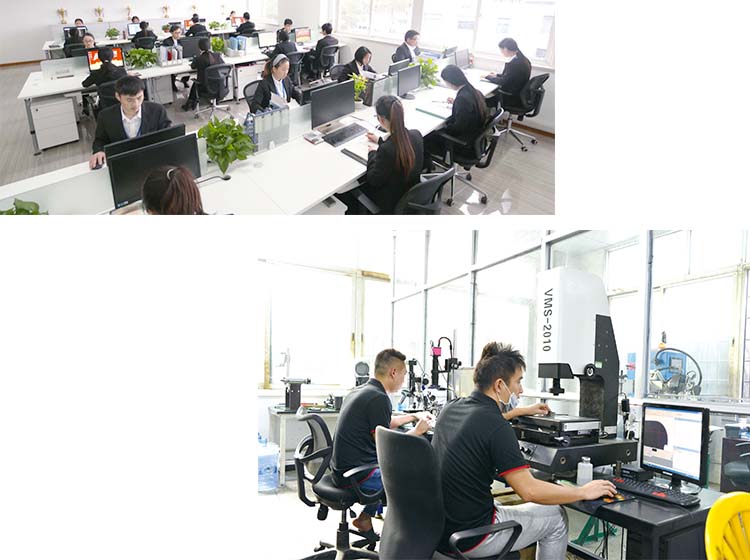
quanlity control:
We have dedicated team of quality control and precise equipment to keep good and stable performance for our products and processing services.

Gun Drill,Gun Drill Bits,Drill Gun Set,Carbide Gun Drill
OPT Cutting Tools Co., Ltd. , https://www.optdiamondtoolss.com